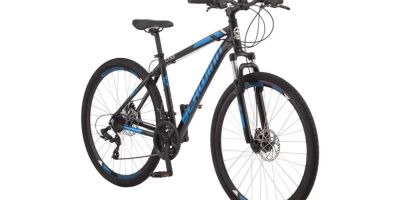Dealing with a Flat Tire: A Real-Life Story
It was a sunny Saturday afternoon when I decided to go for a bike ride through the scenic trails near my house. As I rode past the tall trees and the bubbling stream, the last thing I expected was to hear the dreaded "hiss" of air escaping from my tire. Sure enough, I had a flat tire. But here's the good news: repairing a flat tire on your bike is not as difficult as it may seem. In this guide, I'll walk you through the process of fixing a flat tire, so you can get back to enjoying your ride.

Conte's Bike Shop
3449 Wilson Blvd, Arlington, VA 22201, USA
The Tools You’ll Need
Before we dive into the actual process of repairing your bike tire, it's important to have the right tools. Here's a quick checklist of the essentials:
- Tire levers: These are used to pry the tire away from the rim. You'll need two or three of them.
- Puncture repair kit: This typically includes adhesive patches and rubber cement.
- New tube (optional): If the punctured tube is beyond repair, you’ll need a replacement tube.
- Pump: After patching or replacing the tube, you’ll need a pump to reinflate the tire.
- Wrench or quick-release lever: If your bike has nuts holding the wheels, you’ll need a wrench. A quick-release lever is found on many modern bikes and can be used without tools.
Having these tools on hand will make the process much smoother. Now, let’s get started!

Bicycle Barn LLC
839 Reading Rd, East Earl, PA 17519, USA
Step-by-Step Guide to Repairing a Flat Bike Tire
1. Remove the Wheel
The first thing you need to do is remove the flat tire from your bike. If your bike has a quick-release mechanism, simply open it and slide the wheel out of the frame. For bikes with nuts, use a wrench to loosen them and remove the wheel. Make sure to place the bike on a stable surface, like the ground or a work stand, to make it easier to remove the wheel.
2. Remove the Tire
Once the wheel is off, it’s time to remove the tire. Use your tire levers to pry the tire away from the rim. Start at one side of the tire and gently work the lever under the edge of the tire. With a little pressure, the tire should begin to loosen. Once you’ve gotten a section of the tire off the rim, use the second lever to work around the tire until it’s completely removed. If you're using a replacement tube, be sure to keep track of which side of the tire was facing out, as it will help when you install the new one.
3. Inspect the Tube for the Puncture
With the tire removed, you can now take out the inner tube. Inflate it slightly so you can find the puncture. Look for any obvious holes or damage. To help pinpoint the hole, you can submerge the tube in water and look for bubbles, or simply listen for the hiss of escaping air. Once you locate the puncture, mark it so you know where to apply the patch.
4. Patch the Tube (or Replace It)
If you’re repairing the tube, follow the instructions in your puncture repair kit. First, use a rag or sandpaper to roughen the area around the puncture. This helps the patch adhere better. Then, apply a thin layer of rubber cement to the area, wait a few moments for it to become tacky, and place the patch over the hole. Press down firmly to ensure the patch sticks. Let it sit for a few minutes before you proceed.
If the tube is too damaged to repair, it’s best to replace it with a new one. Simply remove the old tube and insert the new one, making sure it’s properly aligned inside the tire.
5. Reinstall the Tire
Now that the tube is repaired or replaced, it’s time to reinstall the tire. Place the tube back inside the tire and ensure it’s positioned evenly. Starting at one side, work the tire back onto the rim using your hands and the tire levers if necessary. Be careful not to pinch the tube between the tire and the rim as you do this. If you're having trouble getting the tire back on, make sure the tube isn’t twisted and that it’s sitting properly inside the tire.
6. Inflate the Tire
Once the tire is back on, use your pump to inflate the tire to the correct pressure. Check the side of the tire for the recommended pressure, usually listed in PSI (pounds per square inch). Inflate the tire gradually, and stop once you reach the recommended pressure. Be sure not to overinflate the tire, as this could lead to further damage.
7. Reinstall the Wheel
Now that the tire is fully inflated, it’s time to put the wheel back on the bike. If you have a quick-release lever, simply slide the wheel back into the frame and close the lever. For bikes with nuts, align the wheel and tighten the nuts securely with a wrench. Make sure the wheel is centered in the frame, and check that the brakes are working properly.
8. Test the Bike
Before you hit the road again, give the tire a quick spin to make sure it’s seated correctly and holding air. Take your bike for a short test ride to ensure everything is working properly. If the tire feels wobbly or the air starts escaping again, don’t hesitate to double-check your repair.
Tips for Avoiding Flat Tires in the Future
While it’s impossible to completely avoid flat tires, there are some steps you can take to reduce the likelihood of getting one:
- Check for debris: Before riding, check the tires for sharp objects like glass or nails that could cause a puncture.
- Maintain proper tire pressure: Keeping your tires properly inflated reduces the risk of flats and improves your bike's performance.
- Use puncture-resistant tires: Investing in puncture-resistant tires or tire liners can make a big difference in preventing flats.
In my experience, it's always a good idea to carry a small repair kit with you during your rides, just in case you find yourself in a pinch. With the right tools and a little know-how, repairing a flat tire is an easy task that will keep you on the road and enjoying your ride!










